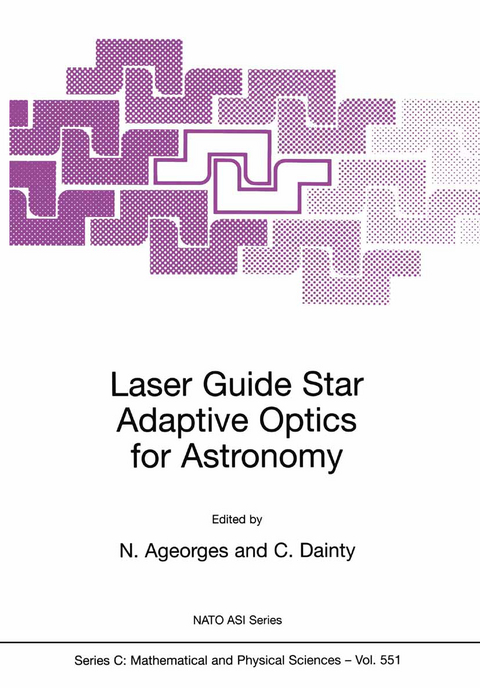
Laser Guide Star Adaptive Optics for Astronomy
Springer (Verlag)
978-0-7923-6381-1 (ISBN)
All the world's major telescopes either have adaptive optics or are in the process of building AO systems. It turns out that a reasonable fraction of the sky can be observed using adaptive optics, with moderately good imaging quality, provided imaging in done in the near IR. To move out of the near IR, with its relatively poor angular resolution, astronomers need a laser guide star. There is a layer of Na atoms at approximately 90 km altitude that can be excited by a laser to produce such a source, or Rayleigh scattering can be employed lower in the atmosphere. But the production and use of laser guide stars is not trivial, and the key issues determining their successful implementation are discussed here, including the physics of the Na atom, the cone effect, tilt determination, sky coverage, and numerous potential astronomical applications.
1 Optical Effects of Atmospheric Turbulence.- 2 Adaptive Optics with Laser Guide Stars: Basic Concepts and Limitations.- 3 The Physics of the Sodium Atom.- 4 The Design and Performance of Laser Systems for Generating Sodium Beacons.- 5 Laser Guide Star Operational Issues.- 6 The Cone Effect.- 7 Laser Guide Star Advanced Concepts: Tilt Problem.- 8 The Tilt Problem — Multiwavelength.- 9 Sky Coverage with Laser Guide Star Systems on 8m Telescopes.- 10 Ground Based Astronomy with Adaptive Optics.- 11 Polarimetric Measurements and Deconvolution Techniques.- 12 Measuring Asteroids with Adaptive Optics.- 13 The Environments of Young Stars.- 14 Distant (Radio) Galaxies: Probes of Galaxy Formation.- 15 Active Galaxies in the Local and Distant Universe.
| Erscheint lt. Verlag | 31.5.2000 |
|---|---|
| Reihe/Serie | NATO Science Series C ; 551 |
| Zusatzinfo | XXIV, 340 p. |
| Verlagsort | Dordrecht |
| Sprache | englisch |
| Maße | 155 x 235 mm |
| Themenwelt | Mathematik / Informatik ► Mathematik |
| Naturwissenschaften ► Physik / Astronomie ► Astronomie / Astrophysik | |
| Naturwissenschaften ► Physik / Astronomie ► Optik | |
| ISBN-10 | 0-7923-6381-7 / 0792363817 |
| ISBN-13 | 978-0-7923-6381-1 / 9780792363811 |
| Zustand | Neuware |
| Informationen gemäß Produktsicherheitsverordnung (GPSR) | |
| Haben Sie eine Frage zum Produkt? |
aus dem Bereich


